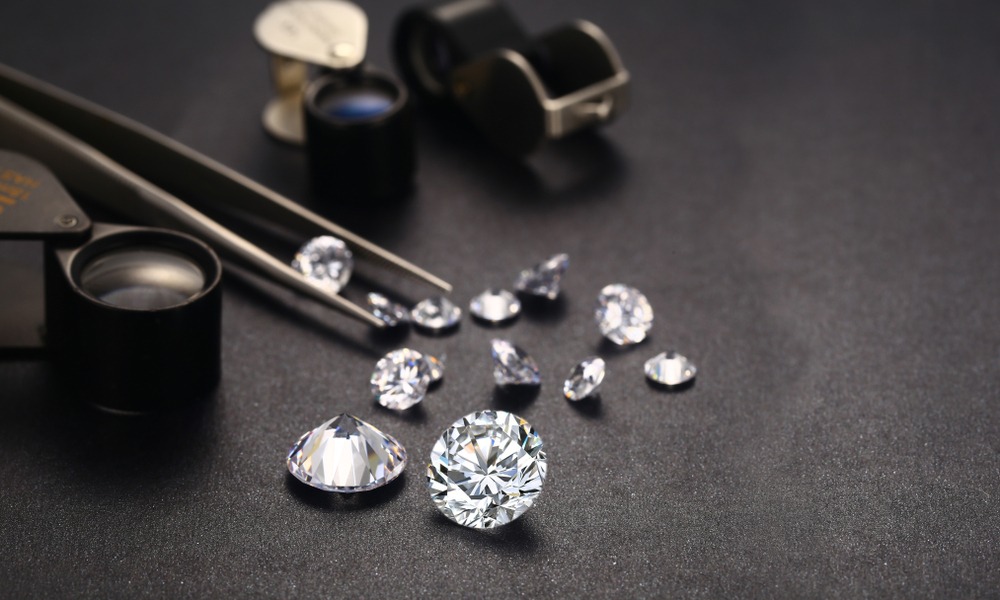Distinguishing real jewelry from fake is crucial for both enthusiasts and investors. With the prevalence of counterfeit jewelry in the market, knowing how to identify authentic pieces can save you from financial loss and ensure you get the quality you pay for. This article will provide expert tips and techniques to help you spot fake jewelry.
Common Materials Used in Fake Jewelry
Counterfeiters employ a variety of materials to mimic the appearance of genuine jewelry. Understanding these materials can help in distinguishing between real and fake pieces:
Base Metals often used as substitutes for precious metals due to their lower cost and malleability. Common base metals used in fake jewelry include:
- Brass: An alloy of copper and zinc, known for its golden appearance.
- Copper: Easily molded and often plated with other metals to enhance its appearance.
- Aluminum: Lightweight and resistant to tarnishing, used in costume jewelry for its affordability.
- Glass and Synthetic Stones: Used to imitate natural gemstones, glass and synthetic stones can closely resemble the real thing but lack the durability and intrinsic value of genuine gems. These materials include:
- Glass: Often used to simulate diamonds and other transparent gemstones. It can be molded into various shapes and sizes.
- Synthetic Cubic Zirconia (CZ): A popular diamond simulant known for its brilliance and clarity, but lacks the hardness and rarity of natural diamonds.
- Synthetic Gemstones: Lab-created gems like synthetic sapphires, emeralds, and rubies. While visually similar to natural stones, they are usually flawless and lack the natural imperfections found in genuine gems.
- Coatings and Platings: Thin layers of precious metals applied to cheaper materials to enhance their appearance and mimic the look of solid gold or silver:
- Gold Plating: A layer of gold electroplated onto base metals like brass or stainless steel. It provides a gold-like appearance but wears off over time.
- Silver Plating: Similar to gold plating, silver plating involves coating base metals with a thin layer of silver to create a silver-like finish.
- Rhodium Plating: Used on white gold and silver jewelry to enhance luster and durability. Rhodium itself is a precious metal, but its use in plating can sometimes mask inferior base metals.
Physical Examination
Authentic pieces usually have stamps indicating the metal’s purity, such as “925” for sterling silver or “18K” for gold. Look for these marks in hidden areas like the inside of a ring band.
Blurry, uneven, or poorly stamped hallmarks can indicate a fake piece. Genuine hallmarks are usually clear and precise.
Real precious metals and gemstones have a specific weight and feel. Counterfeit items often feel lighter due to the use of cheaper materials.
Metals like gold and platinum are denser than most base metals used in fakes. A piece that feels too light for its size may be a fake.
Technological Tools
Use of Jewelers’ Loupe and Microscopes
A loupe or microscope can help you spot tiny marks and inclusions in gemstones that are not visible to the naked eye. Real gemstones typically have natural imperfections.
High-quality jewelry will have precise, clean settings and well-cut stones. Poor craftsmanship can be a sign of a fake piece.
Electronic Gold Testers
These devices measure the electrical conductivity of the metal, which can help determine if it is real gold.
Electronic testers are quick and non-destructive but can sometimes give false readings if the piece is plated.
Advanced Gemstone Analyzers
These tools can differentiate between natural and synthetic gemstones by analyzing their optical and physical properties.
Advanced analyzers can detect treatments and enhancements that may not be visible through simple inspection.
Tips from Experts
- Suspiciously Low Prices: If a deal seems too good to be true, it probably is. Authentic jewelry is rarely sold at a fraction of its value.
- Lack of Proper Documentation: Genuine pieces often come with certificates of authenticity and detailed documentation. Be wary of items sold without these.
- Reading Reviews and Ratings: Check the seller’s reputation and read reviews from previous buyers. Look for consistent positive feedback and avoid sellers with numerous complaints.
- Secure Payment Methods: Use payment methods that offer buyer protection, such as credit cards or reputable online payment systems.
- Keeping Up with Market Trends: Stay informed about current market prices and trends in jewelry. This knowledge can help you spot discrepancies in value.
- Continuous Learning and Vigilance: Educate yourself about different types of jewelry, materials, and authentication techniques. Regularly update your knowledge to stay ahead of counterfeiters.
By using these expert tips and techniques, you can become more adept at spotting fake jewelry. Whether you’re a casual buyer or a serious collector, these insights will help you make informed decisions and ensure that your purchases are genuine. Always remember to inspect carefully, use available tools, and consult professionals when in doubt. Happy jewelry hunting!
